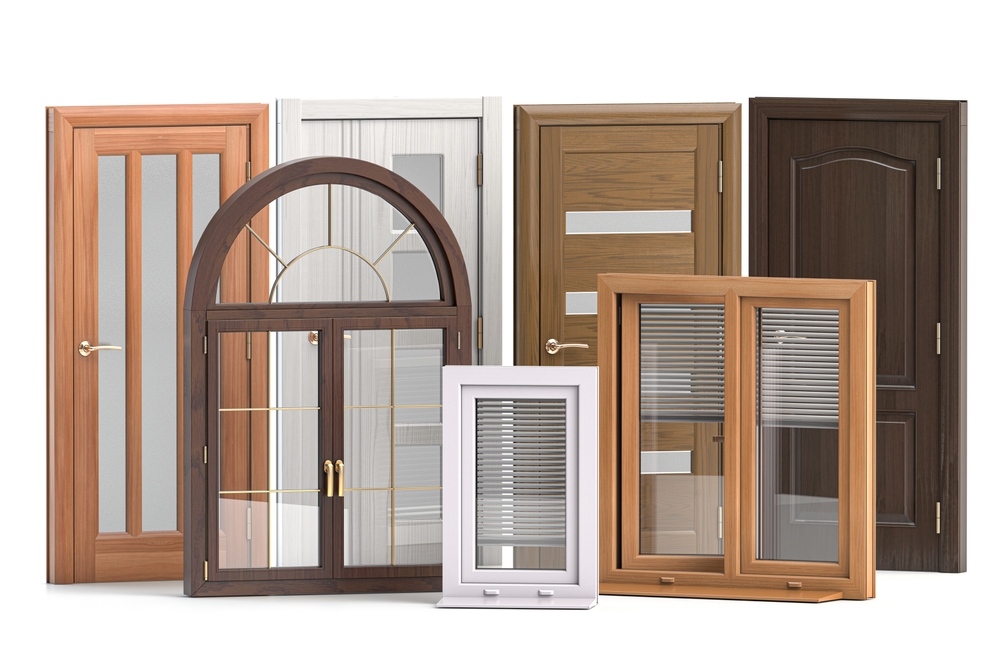
When it comes to fenestration, every detail counts. Window and door systems are more than just functional openings—they’re critical to a building’s aesthetics, energy performance, and structural integrity. While much attention is given to glazing, frame materials, and hardware, window casings often don’t get the recognition they deserve.
Yet, for window and door manufacturers, woodworkers, builders, and architects, casings offer an opportunity to improve the look and performance of the entire fenestration package. The right casing design enhances value, performance, and customer satisfaction from classic wood casings to modern composites.
Let’s take a closer look at how window casings support better building design and why they should be a key part of your product strategy.
What Are Window Casings?
Window casings are the moldings or trim pieces that surround a window frame. They serve both an aesthetic and functional purpose, covering gaps between the window frame and the wall, sealing the opening from moisture and air, and contributing to the overall architectural style of a space.
Casing is often confused with window frames or sashes, but each component has a distinct role:
-
The window frame holds the glass in place and connects to the wall structure.
-
The sash is the part of the window that moves (in operable windows).
-
The casing is the visible trim on the exterior or interior of the window.
Casings can be interior or exterior. Interior window casings are often decorative, tying together the style of a room. Exterior window casings serve more functional roles—blocking wind and water while also enhancing curb appeal.
Aesthetic Value in Residential and Commercial Builds

Match wooden door and window casing designs for a cohesive finish to a home’s fenestration.
Architecturally, window casings define the finish and feel of a window. From minimalist modern builds to ornate traditional homes, casing profiles and materials help set the tone.
For residential applications, wood casings remain a popular choice thanks to their warmth, versatility, and ease of customization. Whether you’re offering sleek square edges for contemporary designs or layered crown moldings for historic homes, casing options allow manufacturers and builders to meet a range of aesthetic preferences.
In commercial projects, casing design can reinforce brand identity or enhance architectural symmetry. Matching window and door casings with other trim features—like baseboards or crown molding—adds a cohesive finish that clients notice.
Custom millwork, especially for wood casings, gives woodworking shops and window manufacturers an edge in high-end or heritage projects. Unique profiles, finishes, and joinery techniques allow builders and designers to deliver a one-of-a-kind look that elevates the entire fenestration design.
Functional Benefits of Window Casings Beyond Design
While appearance is important, window casings play an equally important role in performance. Casings help:
-
Seal the window opening: A properly installed casing covers the joint between the window frame and the wall, preventing air and water from infiltrating the building envelope.
-
Support insulation efforts: Casings can be part of a multi-layered air barrier system, especially when combined with caulks, tapes, and flashing.
-
Reinforce structural integrity: On the exterior, casings help shield vulnerable joints and reduce wear from weather exposure.
-
Protect long-term durability: Casings deflect water and debris away from the window structure, preserving its performance and reducing maintenance needs.
For builders, well-designed casings reduce callbacks related to leaks and drafts. For manufacturers, offering casings as part of a complete fenestration package improves perceived product quality and streamlines installation for end users.
Boosting Fenestration Performance with the Right Casings
As energy codes become stricter and green building practices become more common, the performance of fenestration systems is under the spotlight. Casings directly influence how well windows and doors perform in the field.
Properly integrated window casings can:
-
Reduce thermal bridging by providing continuous insulation around the window opening.
-
Improve airtightness by closing gaps that might otherwise allow unwanted airflow.
-
Meet or exceed U-factor and SHGC ratings when used with high-performance windows.
In Passive House and net-zero energy buildings, every component counts. Exterior casings must be chosen and installed to work in harmony with wall insulation, window flashing, and air barriers. Even in more conventional builds, casing materials and installation techniques affect moisture management, durability, and occupant comfort.
Manufacturing and Installation Considerations

Frontier ERP’s built-in CPQ software makes it easy for customers to choose from different product customization options like window casings.
Whether you manufacture windows, trim kits, or custom millwork, there’s a growing demand for casing options that are efficient to produce, easy to install, and tailored to customer preferences.
Material selection matters. Wood casings remain a premium offering, especially for interiors or historical restorations. PVC and composite casings offer durability and low maintenance for exterior use. Aluminum-clad options are common in commercial projects.
For woodworking shops, CNC technology and digital design tools make it easier to create custom profiles at scale. This allows manufacturers to partner with architects and builders to deliver high-quality casing options that align with modern design trends.
Installation efficiency is also a growing concern. Factory-applied casing kits allow builders to save time on-site and ensure a perfect fit with the window unit. Pre-assembled casings reduce jobsite waste and ensure consistency across large-scale projects.
ERP Support for Casing Integration and Customization
To offer a wide range of casing options without overcomplicating operations, manufacturers are turning to ERP systems with robust product customization capabilities.
With a platform like Frontier ERP, manufacturers can:
-
Use parametric product configuration to define casing dimensions, materials, and profiles
-
Integrate casing selections into CPQ (Configure, Price, Quote) tools for dealers and reps
-
Automatically generate accurate BOMs (bills of material) and work orders for custom casing jobs
- Seamlessly integrate your CAD designs into Frontier ERP with CADFlow
-
Manage inventory and production schedules for casing components across departments
When customers can easily select wood casings, profile types, and finishes during the quoting process, it leads to faster sales cycles and fewer production errors. Manufacturers can also track which casing combinations are most popular and forecast demand accordingly.
ERP tools help bridge the gap between customization and efficiency, empowering teams to offer detailed fenestration packages without bogging down the back office.
Conclusion: A Strategic Element of Window and Door Design
Window casings might seem like a finishing touch, but they’re a critical component in the larger picture of building fenestration. Whether you’re focused on design, performance, or both, casings bring added value to the window and door systems you create, build, or install.
For manufacturers and woodworkers, wood casings offer endless customization opportunities. For builders and architects, they provide a functional, beautiful detail that elevates the entire project. And when integrated with Frontier ERP, casing customization can become a streamlined, profitable part of your operation.
Would you like to learn more about the efficiency Frontier ERP can provide to your window or door business? Contact us today or stop by and see us at AWFS® Fair 2025 in July!




